You might think your furry friend is the only one who gets you, but hold onto your hats, folks! The animal kingdom is hiding some serious linguistic geniuses. From chatty chimps to talkative dolphins, these creatures are breaking down the language barrier in ways that will blow your mind. Get ready to have your perception of animal intelligence turned upside down as we dive into the fascinating world of interspecies communication.
1. Chimpanzees: Masters of Symbolic Language
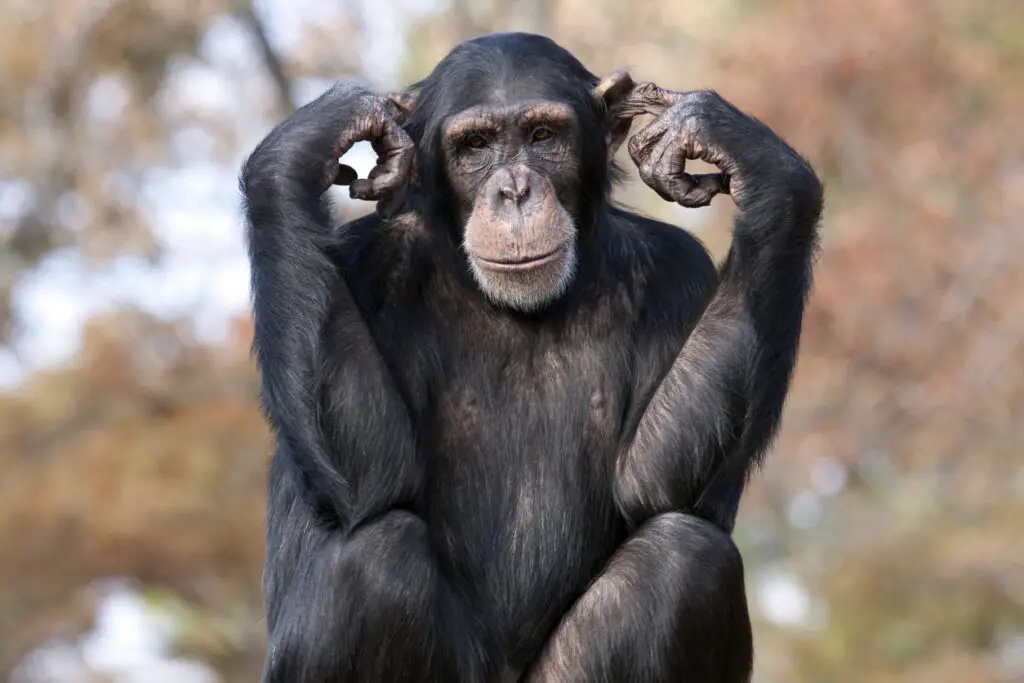
Chimpanzees, our closest evolutionary relatives, have demonstrated remarkable abilities to understand and use symbolic language. Through years of research, scientists have taught chimpanzees to communicate using sign language, lexigrams (symbols representing words), and even touchscreens. This ability to grasp abstract concepts and respond to human commands highlights their cognitive sophistication.
One standout example is Kanzi, a bonobo studied at Georgia State University’s Language Research Center. Kanzi learned over 3,000 English words and could respond to spoken sentences without visual cues. For instance, when instructed to “put the soap in the water,” Kanzi would carry out the task precisely. Dr. Sue Savage-Rumbaugh, who led the research, found that Kanzi not only understood individual words but also their relationships in sentences, akin to a toddler’s grasp of language structure.
2. Dolphins: The Underwater Linguists

Dolphins are renowned for their intelligence and their ability to understand human commands. They use a complex system of clicks, whistles, and body movements for communication with each other and humans. Research has shown that dolphins can comprehend syntax and follow multi-step instructions, demonstrating a level of language processing once thought unique to primates.
In a groundbreaking 1984 study by Dr. Louis Herman at the University of Hawaii, two bottlenose dolphins demonstrated their ability to understand sentences up to five words long. Using hand signals and computer-generated sounds, the dolphins successfully completed tasks like retrieving objects or reporting when a command was impossible to execute. This study revealed not only their linguistic comprehension but also their problem-solving abilities, challenging our understanding of animal cognition.
3. African Grey Parrots: Avian Einsteins

African Grey Parrots are famous for their ability to mimic human speech, but their talents go far beyond mimicry – they actually understand what they’re saying. These birds can grasp abstract concepts like color, shape, and quantity, showcasing cognitive abilities that rival those of young children. Their capacity for language comprehension has revolutionized our understanding of avian intelligence.
Dr. Irene Pepperberg‘s work with Alex, an African Grey Parrot at Harvard University, set new benchmarks in animal communication studies. Alex could identify over 50 objects by name, distinguish colors and shapes, and even understand the concept of zero – a cognitive milestone for humans too! Alex’s ability to combine words meaningfully demonstrated that parrots are capable of referential communication once thought unique to primates, blurring the lines between human and animal linguistic capabilities.
4. Gorillas: Gentle Giants of Sign Language
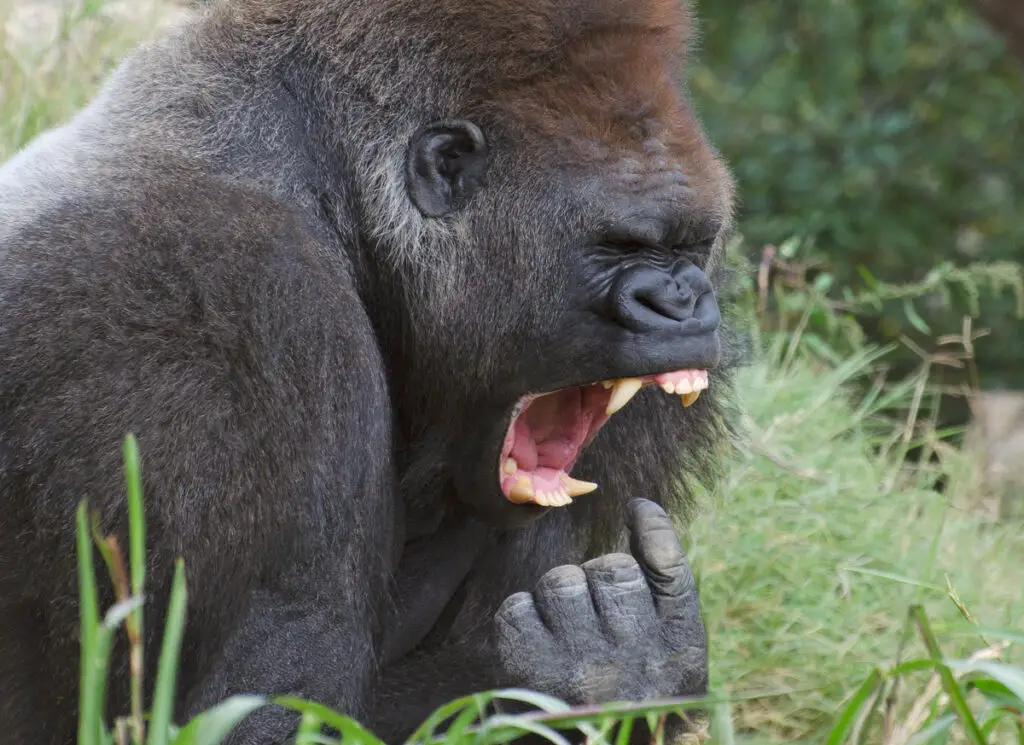
Gorillas have shown they can learn sign language to communicate with humans, demonstrating a surprising aptitude for symbolic communication. These gentle giants use gestures not only to express basic needs but also emotions and abstract ideas, revealing a depth of cognitive processing that challenges our perceptions of primate intelligence.
Koko, the most famous signing gorilla, learned over 1,000 signs under the guidance of Dr. Francine Patterson at Stanford University. Koko could combine signs creatively; for example, she referred to a ring as a “finger bracelet.” Her understanding extended beyond signs – she also comprehended over 2,000 spoken English words. Koko’s ability to express grief over her pet cat’s death showcased her emotional depth and further blurred the line between human and animal communication, prompting us to reconsider the cognitive capabilities of our closest relatives.
5. Elephants: The Talkative Titans
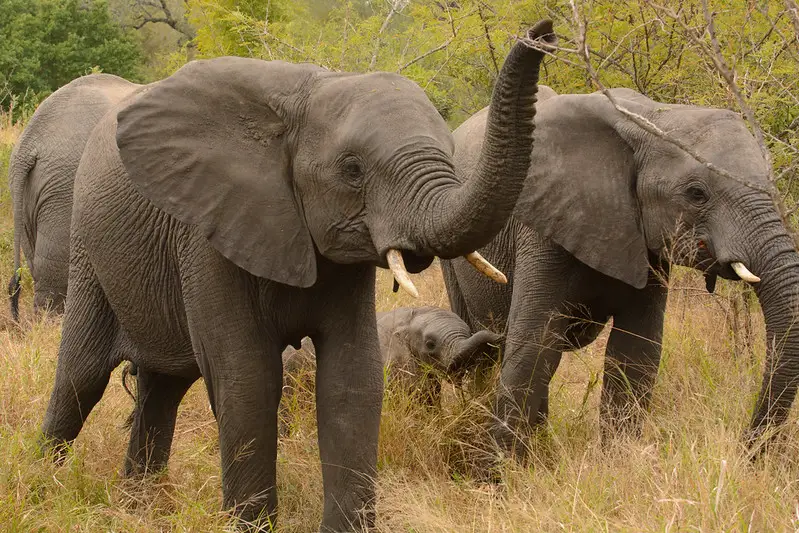
Elephants are highly social animals with complex communication systems that include vocalizations, gestures, and even seismic signals transmitted through the ground. They’ve also shown an impressive ability to understand human speech, demonstrating a level of auditory processing and vocal learning that rivals that of marine mammals and some primates.
Koshik, an Asian elephant studied in South Korea, stunned researchers by mimicking Korean words like “hello” and “sit down.” Dr. Angela Stoeger-Horwath from the University of Vienna found that Koshik used his trunk to modulate his vocalizations, producing sounds remarkably similar to human speech. This vocal learning suggests elephants possess advanced cognitive abilities akin to those seen in parrots and dolphins, challenging our understanding of the evolution of communication in mammals.
6. Dogs: Man’s Best Friend and Linguistic Companion

Dogs have evolved alongside humans for thousands of years, developing an uncanny ability to understand our words and gestures. Research has shown that the average dog can learn to recognize around 165 words, with some exceptional individuals mastering over 1,000. This linguistic prowess isn’t limited to simple commands; dogs can understand complex sentences and even grasp basic grammatical rules.
A groundbreaking study by researchers at Eötvös Loránd University in Hungary found that dogs process language in a way similar to humans. Using brain scans, they discovered that dogs use the left hemisphere to process word meaning and the right hemisphere to process intonation – just like we do. This research, led by Dr. Attila Andics, suggests that the neural mechanisms for processing words evolved much earlier than previously thought, predating the emergence of language itself.
7. Bonobos: Keyboard Communicators
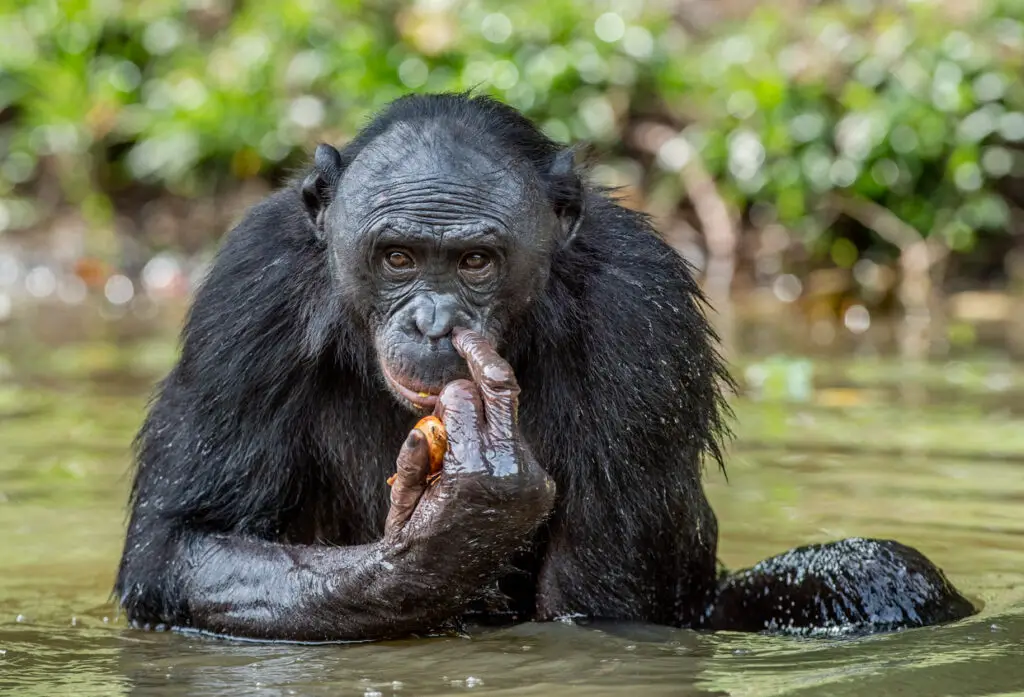
Bonobos are often considered more peaceful than their chimpanzee cousins but no less intelligent when it comes to language comprehension. These apes have been taught to communicate using lexigrams on keyboards, demonstrating an ability to understand and use symbolic language that rivals that of young children.
Kanzi, a bonobo at the Ape Cognition and Conservation Initiative, has shown exceptional skills in this area. His ability to combine symbols creatively showed he understood not just individual words but also grammar-like structures. For instance, when asked to “put the ball in the fridge,” Kanzi would carry out this novel task without prior training on such combinations. This level of comprehension and generalization suggests a deeper understanding of language than previously thought possible in non-human primates.
8. Horses: Emotional Interpreters
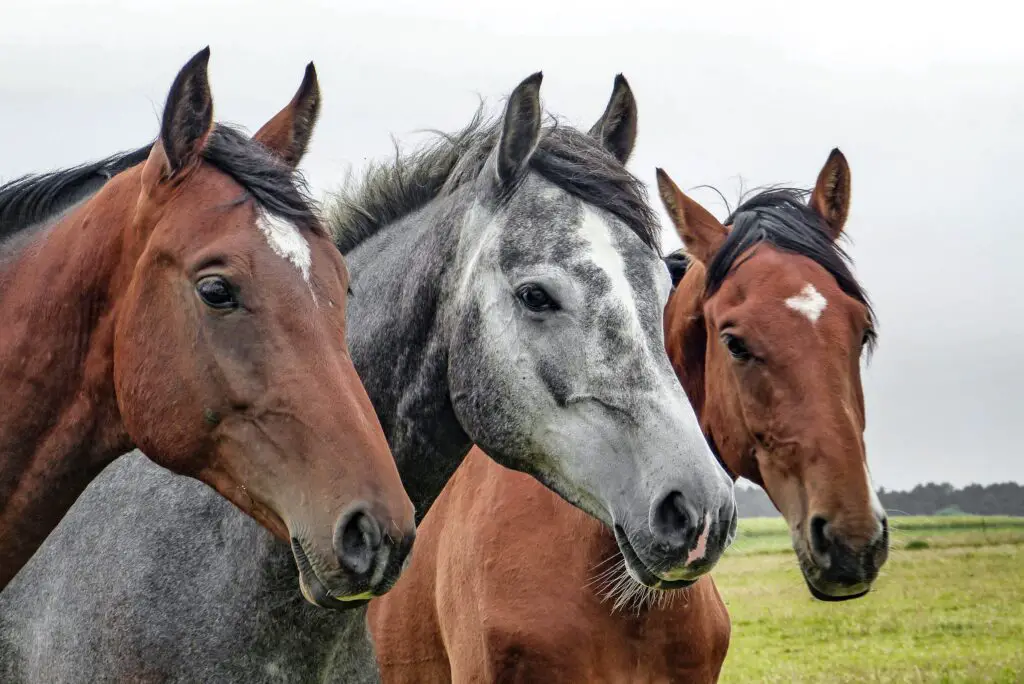
Horses have evolved alongside humans for thousands of years, developing a keen sensitivity to our emotions and cues. They can interpret human body language and even facial expressions, showcasing a sophisticated level of social cognition that extends beyond simple command following.
A study from Kobe University revealed that horses use visual signals like gaze direction or nudging objects when seeking help from humans – a behavior known as referential communication. This ability demonstrates not only problem-solving skills but also an understanding of human attentional states. The research suggests that horses can comprehend complex social cues and even understand when humans are distracted or unable to help, indicating a level of empathy and social intelligence once thought unique to primates.
9. Pigs: Surprisingly Smart Swine
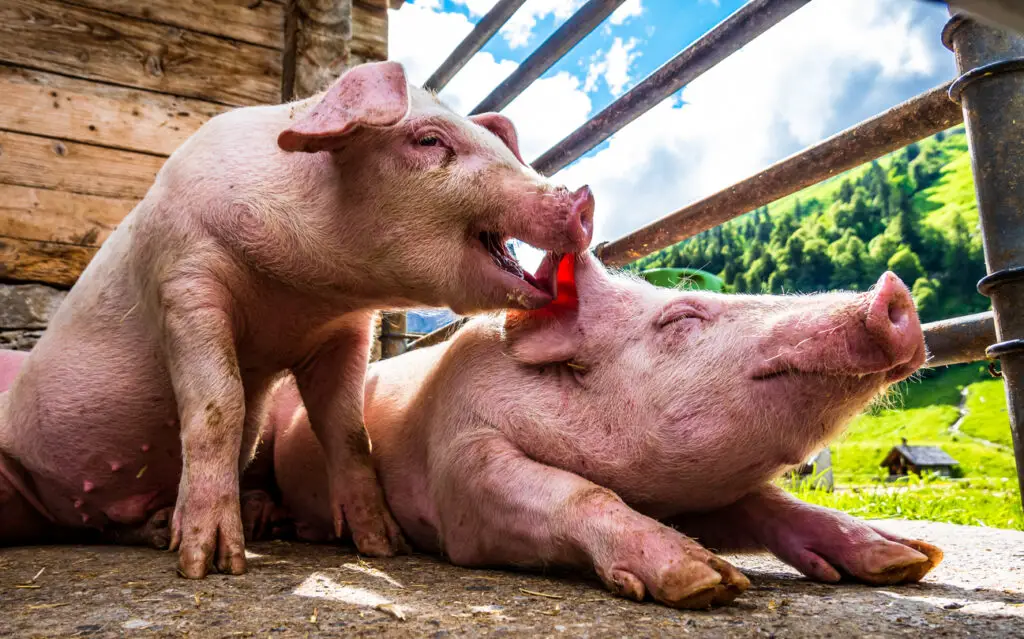
Pigs are often underestimated in terms of intelligence but are capable of remarkable feats of learning and communication. They can understand verbal commands and even use tools, demonstrating cognitive abilities that rival those of some primates. Their intelligence challenges our perceptions of farm animals and raises important questions about animal cognition.
In one study at Purdue University, pigs were trained to play video games using joysticks operated with their snouts – demonstrating conceptual understanding beyond simple trial-and-error learning. Their ability to associate symbols with actions suggests cognitive skills comparable to primates. Additionally, pigs have shown they can understand mirror images, a test of self-awareness that many animals fail. These findings highlight the complex cognitive capabilities of an animal often overlooked in discussions of animal intelligence.
10. Cats: Aloof Yet Attuned

Cats may seem indifferent at times, but studies show they can recognize their owner’s voice and even associate specific words with actions or objects. Their ability to understand human communication is more subtle than that of dogs, but no less impressive, reflecting their unique evolutionary history alongside humans.
Research led by Dr. Atsuko Saito at Sophia University found that cats could distinguish their names from other words spoken in identical tones – though whether they choose to respond is another matter entirely! This selective acknowledgment highlights cats’ unique approach to human interaction. Further studies have shown that cats can understand pointing gestures and follow human gaze, indicating a level of social cognition previously underestimated in felines.
11. Orangutans: Forest Linguists

Orangutans have shown they can use tools and gestures for communication in both captivity and the wild. Their intelligence rivals that of chimpanzees, and their ability to learn and use human-taught communication systems is remarkable. These great apes demonstrate a capacity for symbolic thought that provides insights into the evolution of human language.
Chantek, an orangutan raised by anthropologist Dr. Lyn Miles at the University of Tennessee-Chattanooga, learned over 150 signs in American Sign Language (ASL). He used these signs not just for requests but also for storytelling and humor – he once signed “dirty toilet” as a joke about cleaning up. Chantek’s ability to use language creatively and even lie demonstrates a level of cognitive sophistication that challenges our understanding of animal intelligence and the uniqueness of human communication.
12. Beluga Whales: Arctic Mimics

Beluga whales are known as the “canaries of the sea” due to their wide vocal range and mimicry skills. These Arctic mammals can imitate human speech patterns with surprising accuracy, showcasing their advanced auditory processing abilities and vocal flexibility. Their capacity for vocal learning provides insights into the evolution of communication in marine mammals.
NOC, a beluga whale studied by researchers at the National Marine Mammal Foundation in San Diego, mimicked human-like sounds so convincingly that divers initially thought someone was speaking underwater! This vocal flexibility underscores belugas’ advanced auditory learning capabilities. The study of beluga vocalizations has not only revealed their impressive mimicry skills but also shed light on their complex social structures and communication systems in the wild.
These incredible examples show that animals across species possess unique ways of understanding and interacting with humans – reminding us just how connected we truly are across the animal kingdom!


